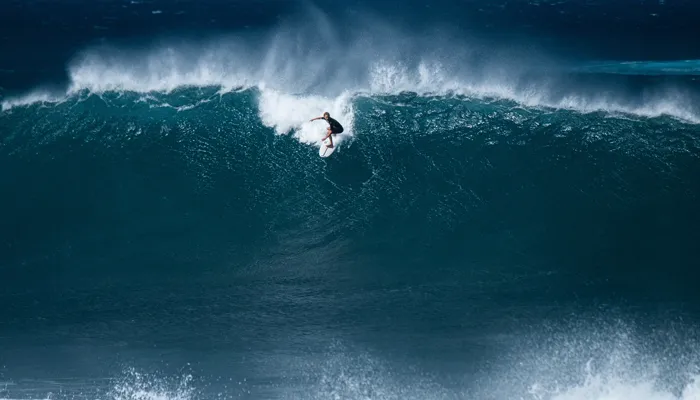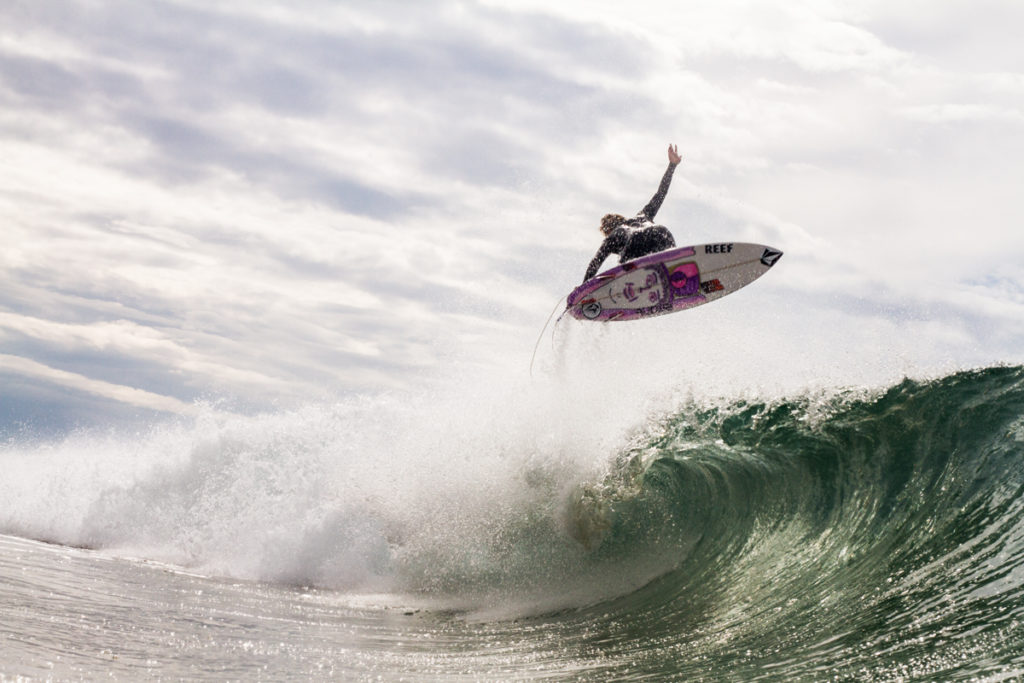Buy Now, Pay Later

Free Surfboard Advice
Customer Service 9am - 5pm (UK)
Trusted by Pyzel

Some surfers are known for their daring feats on some of the biggest waves on the planet. Given the level of skill needed to surf waves of up to 100 ft, it’s amazing more aren’t seriously injured or even killed.
Amazingly, data shows the overall risk of injury among surfers is low compared with some other sports. On average, they suffer around two injuries per 1,000 surfing days and most injuries are minor.
The main cause is contact with their own surfboard or someone else’s, as this leads to 45% of injuries. Wiping out causes 36% of all injuries, while 18% of surfing enthusiasts are injured through being plunged down into the water to the seabed.
Injuries sustained: 46% are to the legs, 26% to the face and head, 13% to the back and trunk, and 13% to the arms and shoulders.
Some locations are known to have lethal waves that can kill even the most experienced surfers. Every so often, there are casualties. When they happen, they’re both tragic and heart-breaking. Unless you’re a pro, you should avoid certain spots for your own safety.
We’ve compiled a list of the five deadliest waves in the world, in terms of accidents. Now we’re asking the question: would you surf there?

The tragic data speaks for itself: Hawaii’s Pipeline has killed more surfers than any other location on the planet. It has claimed the lives of seven surfers since 1989 and injured countless others.
The most recent incident, in December 2015, was almost another fatality, when Florida’s Evan Geiselman hit the ocean bed and ended up unconscious. Fellow surfer Andre Botha bravely dived to the bottom of the sea and pulled Geiselman to the surface. He began resuscitation and saved Geiselman’s life.
The surfers who lost their lives included Andy Chuda in 1989, Travis Mussleman in 2000, Moto Watanabe in 2004, Malik Joyeux and Jon Mozo in 2005, Joaquin Velilla in 2007 and Joshua Nakata in 2008. Yet despite the long list of tragedies, people still flock there to literally perform death-defying feats on the huge waves.
To date there have been five recorded deaths at Teahupoo and more close calls than anyone wants to count. The most horrific fatality was the 2001 wipeout of local surfer Briece Taere, who was sucked over the falls while surfing a 12-footer.
The force of the waves drove him into the reef, breaking his back. He fell into a coma and was rushed to hospital, but sadly died of his injuries after two days. Most recently, Niccolo Porcella celebrated after surviving a dangerous wipeout in 2015, when he reportedly “nearly died”. Afterwards, he described it as the most violent experience he ever had, admitting he was “annihilated”.
Spectators feared he had died, after he was mercilessly rolled forwards and dashed on coral reefs under the surface. After being bounced “like a pinball” off the reef countless times and hitting the ocean bed, he managed to drag himself to the surface, gasping for air. However, he said straight away it hadn’t put him off surfing.
There have been three fatalities among surfers at Puerto Escondido in Mexico: Ron Cassidy in 2007, Noel Robinson in 2011 and Jay Adams in 2014. Recent improvements in the lifeguard services have had a significant impact, helping to prevent further serious injuries and fatalities. However, on the heaviest days, the waves are still lethal.
Surfer Mark Healey has admitted he doesn’t know how he has cheated death there while catching giant waves at Puerto Escondido.
During a recent Puerto Escondido Challenge, experienced surfer Makua Rothman couldn’t stop himself from being pulled into a dark, sandy pit. He described how he came up with a “lung full of foam”. He somehow made his way back to the beach, but said it took him a long time to recover following the incident.
The surfing world realised just how dangerous big-wave surfing was at Waimea Bay in 1943, when experienced surfer Dickie Cross disappeared. He had started paddling out at Sunset Beach on 22nd December, with fellow surfer Woody Brown, when a strong northwest swell quickly struck.
As each set grew larger, they paddled for 2.5 miles down to Waimea Bay in the hope of making it to the beach. While Brown made it, sadly, Cross did not. Searchers never found his body. The disappearance shocked the surfing community and it was some years before anyone tempted fate there again.
Tragedy struck again in 1995, when Californian surfer Donnie Solomon lost his life at Waimea. Most recently, on 29th October 2015, big-wave surfer Alec “Ace” Coole paddled out at Waimea. However, he disappeared in the waves. Rescuers looked for him for two days, but he was never seen again.
Time and time again, Maverick’s has given the big wave surfing community cause for concern. The tragic death of Mark Foo in 1994 hit the headlines all over the world, putting Maverick’s on the map for the wrong reasons.
In March 2011, Sion Milosky, of Kaleheo, Kauai, drowned there at the age of 35. The cold and ominous heavy water location almost killed aspiring surfer Jacob Trette in 2012. A horrific wipeout at Maverick’s inspired Shane Dorian to create an inflatable life vest – a safety aid worn by most big wave riders today.
While surfing is one of the most thrilling and exhilarating sports on the planet, it can also be one of the most deadly. Always stay safe – no matter what size the wave, the sea can be a dangerous place if you’re not aware of your surroundings. Always have the correct surfing gear and never take any foolish risks, as no sport is worth dying for.
So, what do you reckon now you’ve read about the most high-risk surfing destinations on the planet: would YOU surf the world’s deadliest waves?
© 2024 Ocean Magic – The Factory. All rights reserved. Company Number: 04664716. VAT Registered 807 8508 12

Get 10% off your first order!
Join the Lineup!